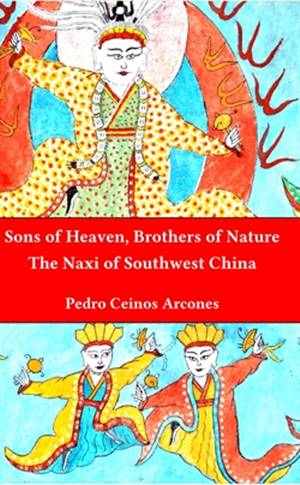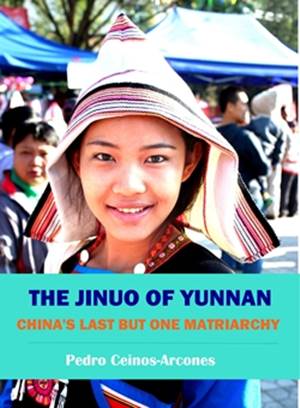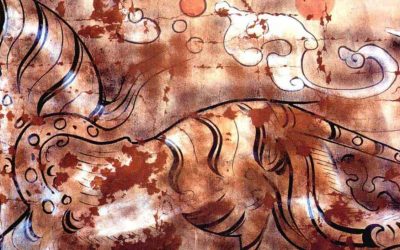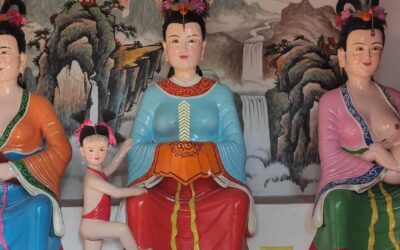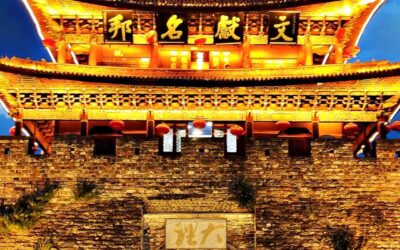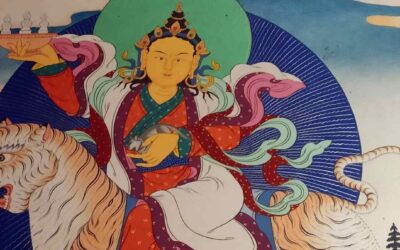Taishan Mountain, life and death in Chinese culture, according to the work of Edouard Chavannes
Mountains are, in China, divinities. They are considered as nature powers who act in a conscious way and who can, therefore, be made favourable by sacrifices and touched by prayers; but these deities are of various importance: some are small local geniuses whose authority is exercised only on a small territory; others are majestic sovereigns who hold immense regions under their dependence. The most famous are five (1); they are: the Song Gao or Central Peak, the Taishan or Eastern Peak, the Hengshan or Southern Peak, the Huahan or Western Peak, the Hengshan or Northern Peak. Among these five mountains themselves, there is one that is even more famous than the other four; it is the Taishan or Eastern Peak (pp 3)
Folklore also teaches us that the mountains are the habitat of characters endowed with marvellous faculties; ╓6 fairies or gnomes have their frolics there. In China, under the influence of Taoism, these geniuses of the mountains were conceived as men freed from all the obstacles that weigh down and shelter our existence; they are the immortals, the blessed to whom one who feeds on marvellous jade utensils and who drink ambrosia can go, as the inscriptions on three mirrors from the time of the Han say (pp. 6).
But the mountain is not only the place where the celestial gods and the immortals appear; it is itself a divinity.
The general attributions of a mountain deity are of two kinds: on the one hand, in fact, it weighs by its mass on the whole surrounding territory and is like the principle of stability; it is the regulator which prevents the ground from becoming agitated and the rivers from overflowing; it puts obstacles in the way of earthquakes and floods. On the other hand, the clouds accumulate around the mountain top which seems to produce them and which deserves the Homeric epithet of «assembler of clouds» (pp. 8).
Many prayers from the Ming period show us that the Taishan is indeed invoked by virtue of these two kinds of attributions. In the spring, it is implored to promote the growth of grain; in the autumn, thanksgiving is offered to thank it for the harvest it has protected. It is asked to help men by its invisible and powerful action which distributes rain and good weather in the right proportions and allows the nourishing plants to reach maturity. In case of drought, it is quite natural to turn to it, because «to see that the rain comes to the ploughman in good time is the secret task for which it is responsible»; so when the rains are late, the ears of corn in the fields wither and the peasants begin to fear famine, the sovereign of mankind has recourse to the majestic Peak, who can and must put an end to this misfortune (pp. 8).
Similarly, in the event of an earthquake or flood, prayers appropriate to the circumstances remind the Taishan of his functions as ruler of an entire region and invite it to restore order (pp 9).
Taishan is the Peak of the East; in this capacity it presides over the East, that is to say, the origin of all life. Like the sun, so all existence begins on the eastern side. The yang principle, which makes the sap in the green plants spring forth, is concentrated on the Eastern Peak, from which emanates its invigorating fragrance (pp. 12).
At the same time as the Taishan carries in its side all future existences, it is, by a rather logical consequence, the receptacle where the lives that have come to an end go. From the first two centuries of our era, it was a widespread belief in China that when men died, their souls returned to the Taishan. In popular literature, there are a whole series of anecdotes that inform us about these kinds of Champs Elysées where the dead continue to speak and act as if they were alive; official positions are sought there, recommendations to influential people are very useful; it is another underground China that flourishes under the sacred mountain (pp. 13).
Since the Taishan gives rise to births and collects the dead, it has been concluded that it presides over the greater or lesser duration of human existence; it unites in itself the attributions of the three Fates, giving life, maintaining it and finally interrupting it. Around the year 100 A.D., a certain Hiu Siun, feeling seriously ill, went to the Taishan to ask to live. A poet of the third century A.D. wrote with melancholy: «My life is on its decline; the Eastern Peak has given me an appointment” (pp. 13).
The cult of the Taishan because this divinity presides over the souls of the dead. This is why in China one finds representations of the torments of the underworld in two kinds of Taoist temples, one being those of the god of the city (Chenghuang miao), the others being those of the Taishan (Dongyue miao). This again explains why, in these two kinds of temples, one often sees, suspended above one of the doors or against a wall, some enormous abacus; the presence of this calculating machine means that the divinity of the place has the mission of counting human actions and balancing good and evil (pp 16).
Historical texts tell us at various times and at great length about the famous feng and shan ceremonies that were performed at the top and bottom of the Taishan. The feng sacrifice was for Heaven; the shan sacrifice was for Earth. It is important to determine precisely what these rites were (pp. 16).
Imagen shi zhao via Flick.
Chavannes, Edouard. Le T’ai Chan. Essai de monographie d’un culte chinoise. Ernest Leroux. Paris. 1910.
More posts on Chinese culture
Zhang Yongzheng, the master of deluding reality
Zhang Yongzheng, the master of deluding reality Reality is an illusion, say Buddhist texts. And each of Zhang Yonggzheng's (Gansu, 1978) works plays with this concept to remind us again and again that there is no immutable reality but a fluid universe of forms that...
The book Hanzi for HSK 1-3 now available in Greek language
The book “Hanzi for HSK 1-3” now available in Greek language This April, the translation of my book Hanzi for HSK 1-3 has been published in the main digital bookstores in Greece. The Greek version of this book, from the pen of Stefanos Karampalis, has been one of...
Portrait of a Mandarin in 1800
Portrait of a Mandarin in 1800 This was the year in which a very interesting book was published, which through 60 portraits, tried to show some aspects of life in China to the western public. A book now in the public domain, from which we adapted "A Mandarin of...
The art of laying out gardens among the Chinese
The art of laying out gardens among the Chinese In the 1740s, William Chambers travelled on three trading voyages to China with the Swedish East India Company. He was the first European to study Chinese architecture methodically. In a book published in 1757, Designs...
The secret treasure of ancient Chinese art
The secret treasure of ancient Chinese art China has a fabulous artistic treasure hidden from the eyes of the public and specialists. It is her best kept treasure, because given the dispersion of its location, the difficulty of conservation and even evaluation and...
2,000-year-old paintings in a Chinese tomb
2,000-year-old paintings in a Chinese tomb It has been more than 10 years since the publication of The complete collection of murals unearthed in China, a dozen or so books describing with abundant full-color photographs the frescoes discovered in Chinese tombs....
More posts on China ethnic groups
Sexual aspects of Gu venom
Gu illness resulted from a contamination by gu poison, which a recent analyst has characterized as “an alien evil spirit which entered [the] body and developed into worms or some similar animal that gnawed away at the intestines or genitalia.” This poison was thought...
Sunset in Dali
No Words Fuxing Rd from the South Gate. Dali, Yunnan.Corner in Fuxing Rd, Dali, Yunnan.Night market at the south of the South Gate. Dali. YunnanLast posts
The five secret temples of the lamas in Lijiang
The five secret temples of the lamas in Lijiang Religions of Lijiang Although the city of Lijiang is known primarily for the Dongba religion practiced by the traditional shamans of the Naxi, also called Dongba, who with their rituals administered the religious and...
The Local Lords cult of the Bai nationality
The worship of the Local Lords (benzhu) is the most characteristic of the Bai people. Their religious life revolves around the Benzhu temple of each village, as each village venerates a local lord, sometimes a historical figure who sacrificed for the people. In other...
The tiger hero of the Naxi
The tiger hero of the Naxi[1] A long time ago, a man named Gaoqu Gaobo lived in the Baoshan area. He had a strong body, lively intelligence, and certain magical powers. He was always willing to help people. One day he went on a trip with a group of villagers. After a...
Wonderful- yaks most precious treasure is their manure
Wonderful- yaks most precious treasure is their manure Most of the travelers who visited Tibet in former times noticed the importance that, for the maintenance of the living of the Tibetan nomads and travellers, had the Yak manure, known among the...


